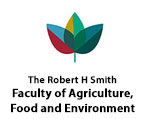Citation:
Date Published:
2016Abstract:
Summary Several studies have reported effects of the plant phenolic acids cinnamic acid (CA) and salicylic acid (SA) on the virulence of soft rot enterobacteria. However, the mechanisms involved in these processes are not yet fully understood. Here, we investigated whether CA and SA interfere with the quorum sensing (QS) system of two Pectobacterium species, P.?aroidearum and P.?carotovorum ssp. brasiliense, which are known to produce N-acyl-homoserine lactone (AHL) QS signals. Our results clearly indicate that both phenolic compounds affect the QS machinery of the two species, consequently altering the expression of bacterial virulence factors. Although, in control treatments, the expression of QS-related genes increased over time, the exposure of bacteria to non-lethal concentrations of CA or SA inhibited the expression of QS genes, including expI, expR, PC1_1442 (luxR transcriptional regulator) and luxS (a component of the AI-2 system). Other virulence genes known to be regulated by the QS system, such as pecS, pel, peh and yheO, were also down-regulated relative to the control. In agreement with the low levels of expression of expI and expR, CA and SA also reduced the level of the AHL signal. The effects of CA and SA on AHL signalling were confirmed in compensation assays, in which exogenous application of N-(?-ketocaproyl)-l-homoserine lactone (eAHL) led to the recovery of the reduction in virulence caused by the two phenolic acids. Collectively, the results of gene expression studies, bioluminescence assays, virulence assays and compensation assays with eAHL clearly support a mechanism by which CA and SA interfere with Pectobacterium virulence via the QS machinery.
Notes:
doi: 10.1111/mpp.12295

